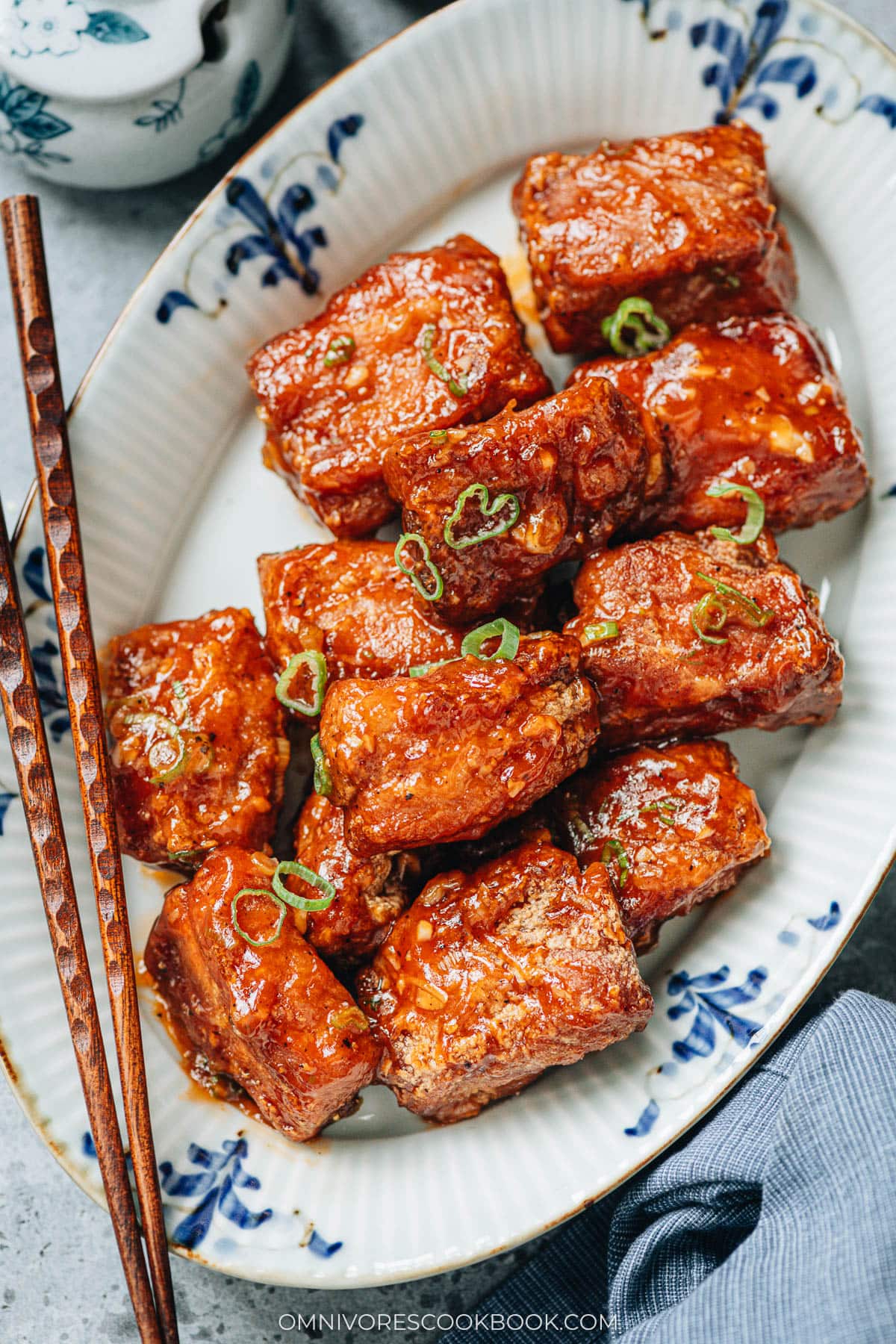
What are Peking ribs?
Peking ribs, or Jing Du Pai Gu(京都排骨), are a classic Chinese dish that beautifully balances rich pork flavor with a glossy, tangy and sweet sauce. The dish shares some similarities with Hong Kong pan fried pork chops. But this dish uses small pork riblets, deep fried until crispy and finished with a sweet and sour sauce made with vinegar and ketchup. It’s a staple in northern Chinese cuisine and a favorite for festive occasions, family dinners, and banquets.
Ingredients
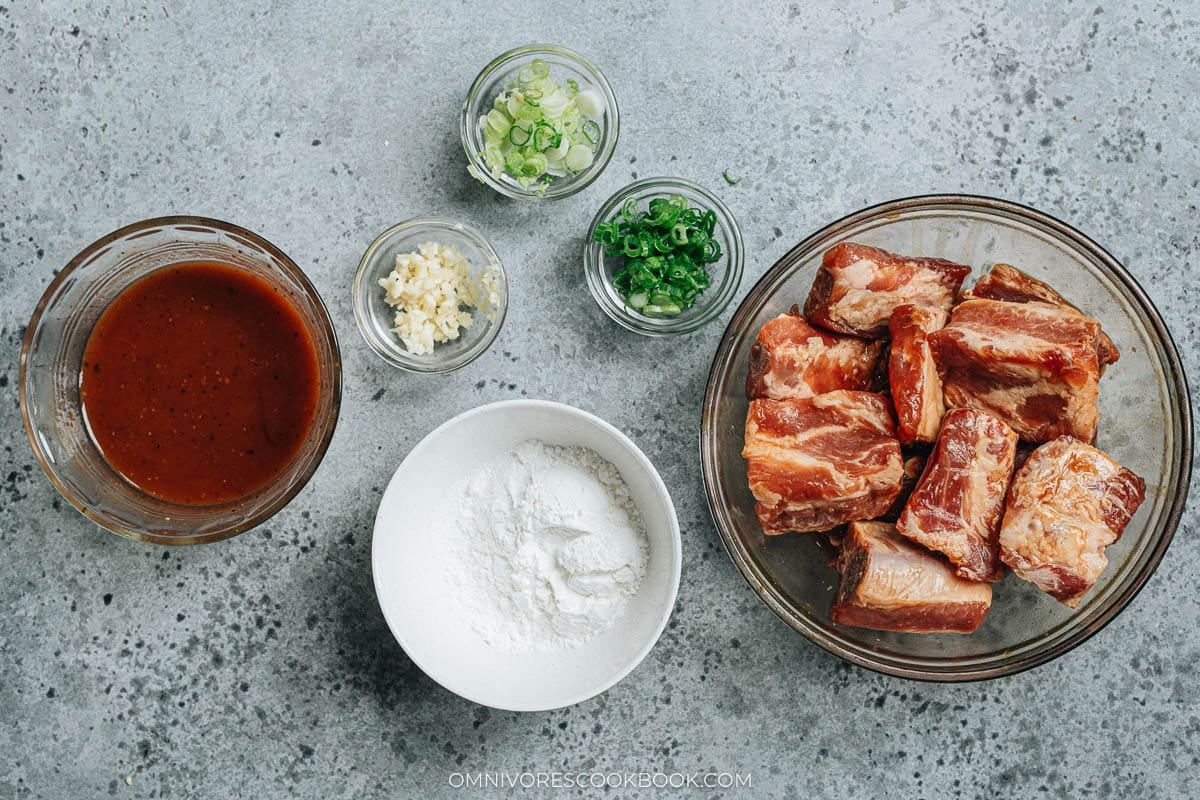
What type of pork ribs to use
The best ribs for making Peking ribs are the short riblets that you can usually find in Chinese markets. They are about one third the size of a whole rib. If you only have access to a standard slab of ribs, you might be able to ask the butcher to cut the ribs across the bone into two or three sections. Then you can further cut them into individual riblets.
Another method is to use whole ribs. The cooking time and method won’t change. But the ribs might need more oil for deep frying due to their size.
The marinating mixture
The Shaoxing wine, soy sauce and oyster sauce add a rich umami while eliminating any gamey flavor from the pork. The baking soda helps tenderize the pork and keep it juicy.
The sweet and sour sauce
The sauce uses a mixture of ketchup, soy sauce, vinegar, and sugar for the main flavor profile. It creates a sweet and tangy sauce that’s well balanced with a rich umami. The cornstarch is the thickening agent and the black pepper adds a little kick to the sauce.
How to make
Marinate the pork, overnight if possible, then drain off the liquid and coat the ribs in cornstarch. The marinating process tenderizes the meat and makes it very flavorful. And the cornstarch coating creates a crunchy crispy texture once the ribs are fried.
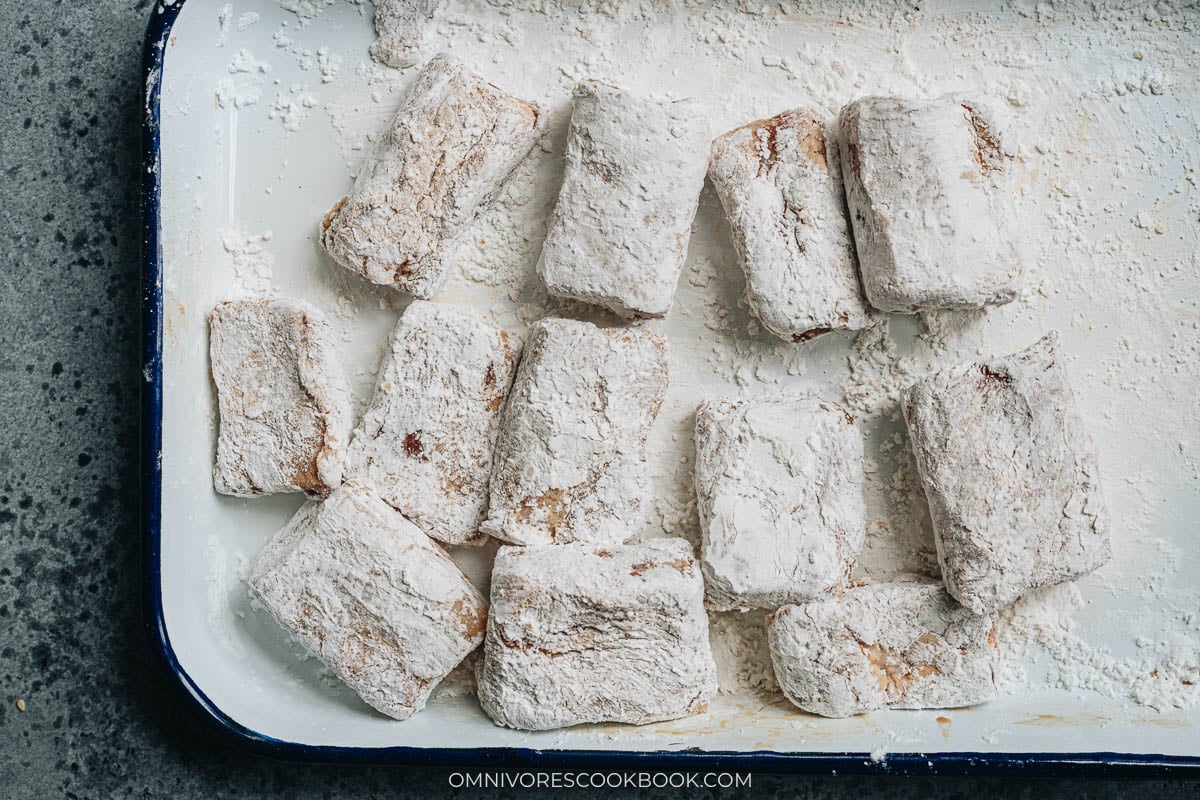
Fry the ribs at 350°F (176°C) for 2 minutes until golden. Then transfer them to a wire rack to drain off the excess oil.
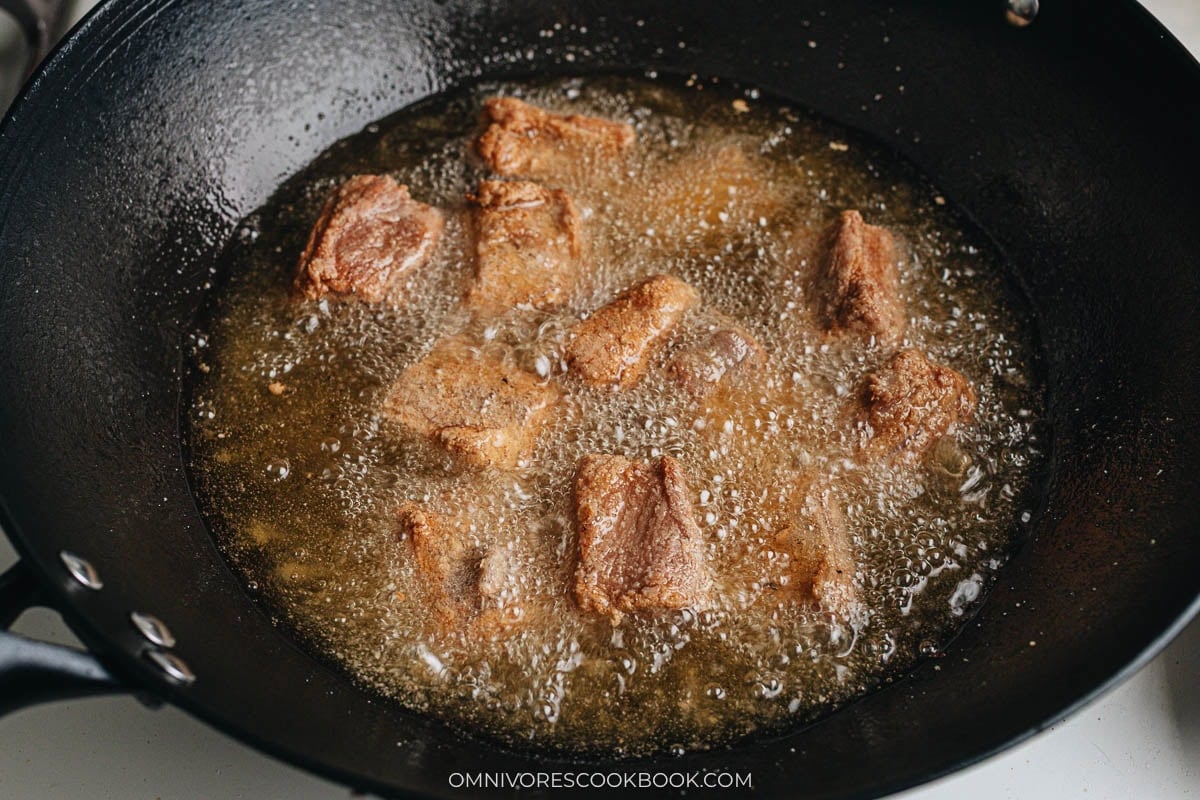
Fry the ribs a second time at 375°F (190°C) for 1 minute, until golden brown. You will notice the oil bubbling more fiercely the second time, because more moisture is evaporating, creating an extra crispy coating.
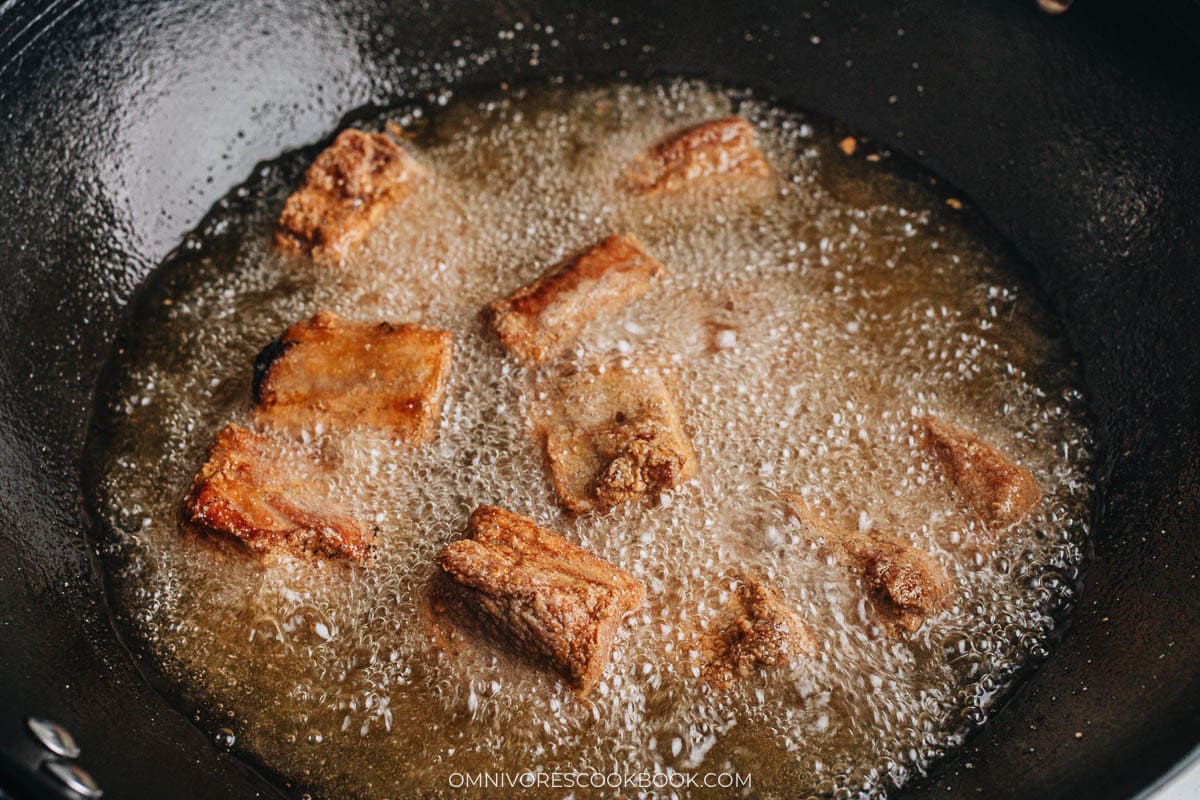
Transfer the ribs to a wire rack to cool slightly. This helps the coating further crisp up and hold its texture in the sauce.
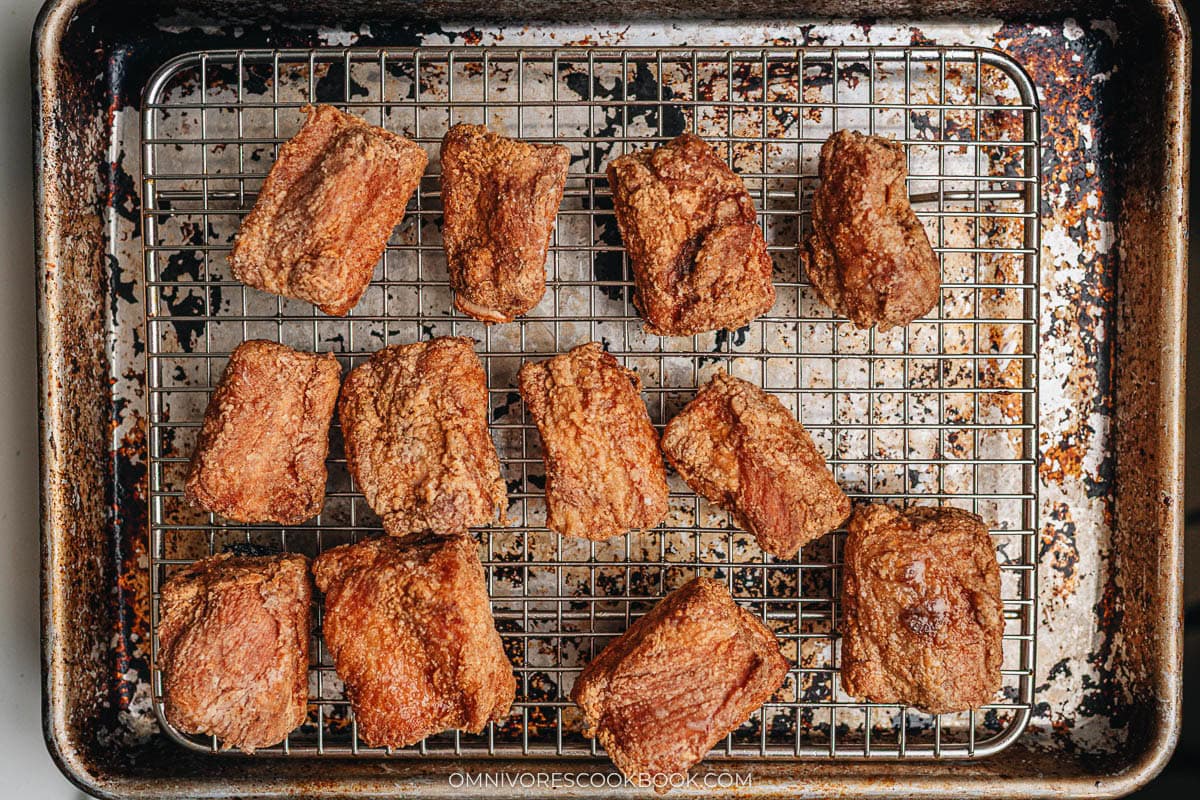
Cook the aromatics and then add the sauce mixture. Cook until the sauce thickens.
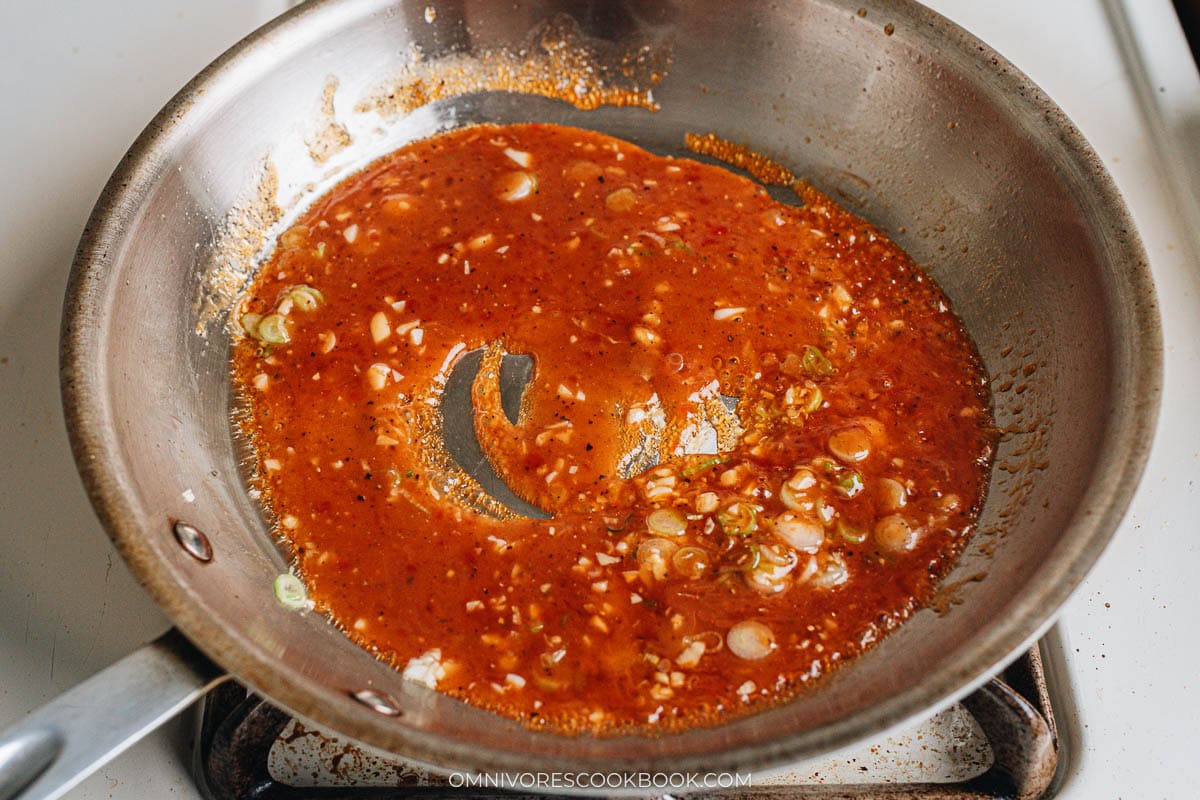
Return the fried ribs into the sauce and toss until just coated. Immediately transfer them to a serving plate and serve hot.
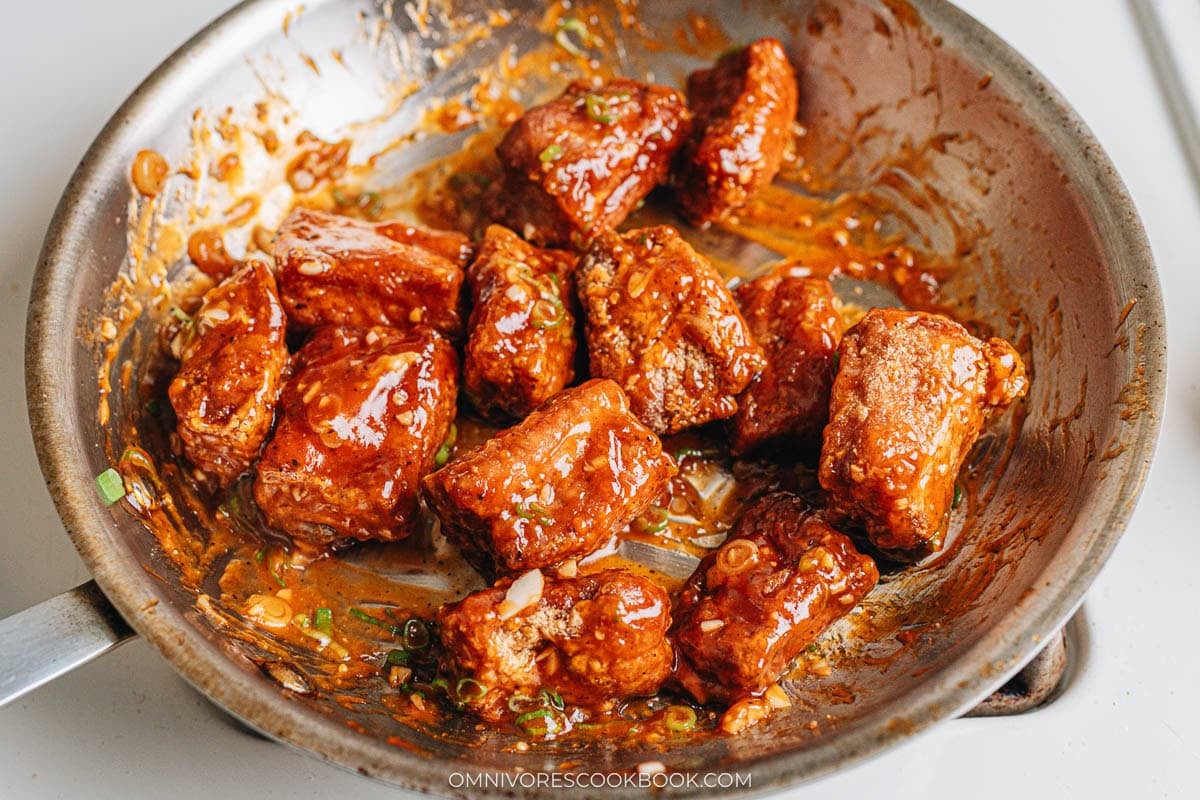
Why is deep-frying important for this dish?
Deep frying is the key cooking technique for Peking ribs to create its special texture – crispy on the surface and juicy and chewy on the inside. Pan frying simply won’t create a great texture due to the uneven shape of the ribs. I also do not recommend shallow frying because it tends to overcook the pork and make it chewy.
Keys to success
- Use a wok for deep frying. The shape of the wok is perfect for deep frying, so you use a little less oil and have more room to properly fry the food. If a wok is not available, a deep pot works as well.
- Keep the frying time short. The total of 3 minutes of cooking time seems like very little for ribs, but after many tests it gave the best result. Because short riblets have thin meat, they take very little time to cook through. If you accidentally overcook the ribs, they become tough immediately.
- Use just enough sauce to coat the ribs. This ensures the ribs stay crispy longer. If you use too much sauce, the ribs will soak up a lot of liquid and become soft quickly.
Variations using different cuts of pork
If you do not have access to short riblets, you can use different cuts of pork for this dish. Here are my favorites:
- Thin pork chops: You can use 1/2” thick boneless pork chops. Gently pound the chop to tenderize it, then slice it into big bite-sized pieces.
- Pork slices: Slice pork tenderloin across the grain into 1/2” (1 cm) pieces, then further slice each piece into 1/2” (1 cm) strips.
If you use either of these cuts as a substitute, you should only use 10 to 12 oz (280 to 350 g) of pork, since these are boneless cuts, unlike pork ribs.
How to serve
Peking ribs are often served as a hot appetizer to start the meal, that’s why this recipe is quite small in size. If you want to serve this dish as a main dish, you can easily double the recipe using the sliding scale in the recipe card. If doubling the recipe, make sure to fry the pork in batches for the best result.
These ribs are great by themselves, but they are also tasty served over rice as a main dish.
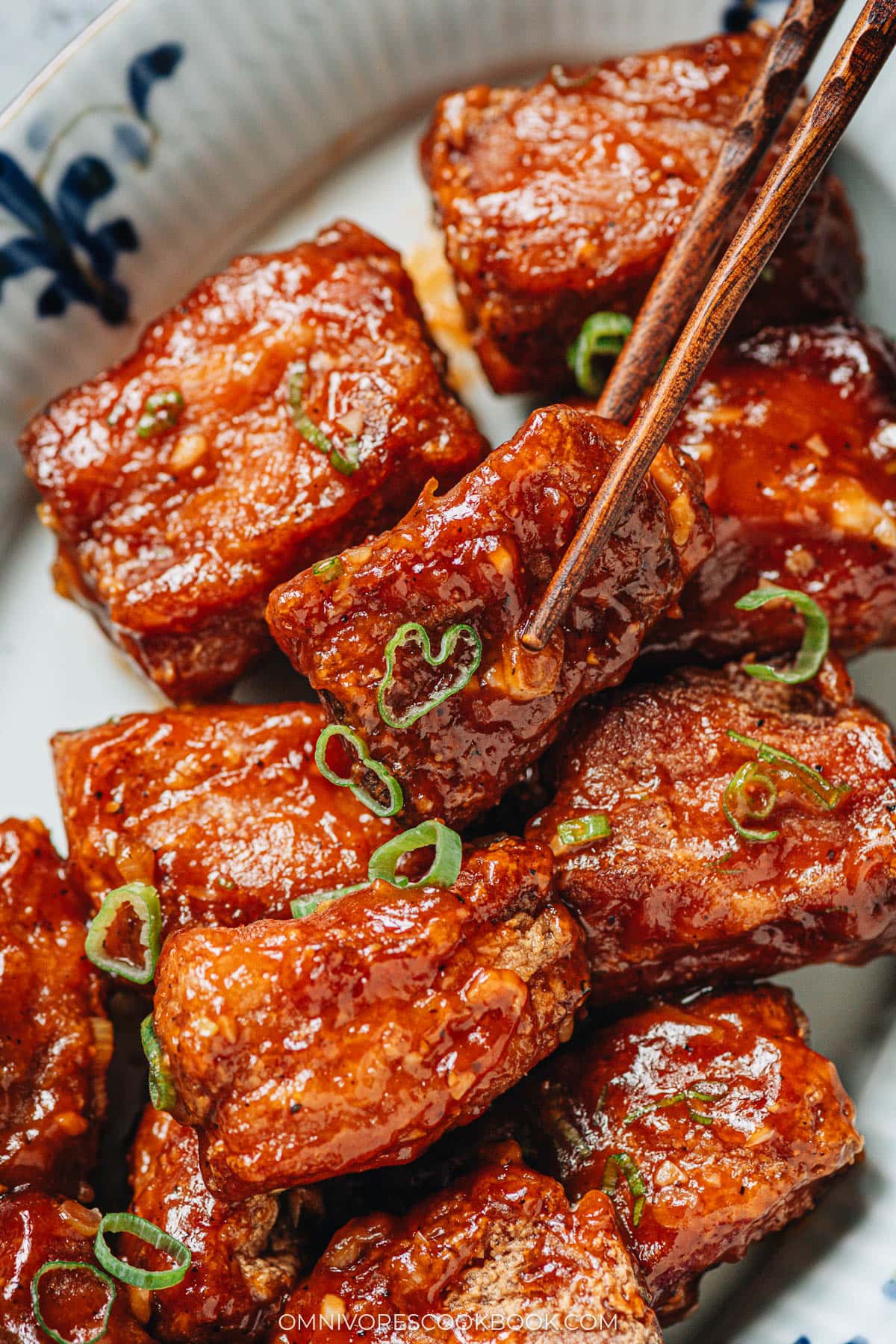
Frequently asked questions
Can I use any other method than deep frying?
Unfortunately, other cooking methods change the texture of the pork ribs and make the dish completely different. If you want to enjoy the same flavor profile, though, here is a suggestion:
Braise the pork ribs until they are tender. It takes about 1 hour on the stove, 20 minutes in the Instant Pot, or 6 to 7 hours on low in a crockpot. Then coat the pork with a thin layer of cornstarch and pan fry it until the surface turns golden. Follow the rest of the recipe for the sauce. This makes a completely different dish but you will get very tasty ribs.
Can I make this dish in advance?
Peking ribs is a dish you should serve immediately as soon as it’s cooked, so the ribs still be crispy in the sauce. If you want to prepare the dish in advance, fry the pork only the first time (2 minutes of frying at 350°F (176°C). Fry them the second time right before serving, then mix them with the sauce.
Why did my pork ribs turn out tough?
If you used the deep frying method and got tough ribs, you probably overcooked the pork. When frying, there is a fine line between perfectly cooked and overcooked ribs, so it’s important not to overcook. On the other hand, pork ribs are a tough cut of meat. Even after deep frying, the pork will somehow remain a little chewy and that’s totally normal. For the best result, use fattier ribs for tenderer results.
Other delicious pork recipes
- Char Siu (Chinese BBQ Pork, 叉烧肉)
- Hong Shao Rou (Red Braised Pork, 红烧肉)
- Chinese Lion’s Head Pork Meatballs (狮子头)
- Chinese BBQ Ribs
- Chinese Dry Rub Ribs
Chinese Cooking Made Easy
Are you new to this website? This free email series is a great place to start. I’ll walk you through a few of my most popular recipes and show you how and why they work. You’ll quickly start to cook better Chinese food in your own kitchen.
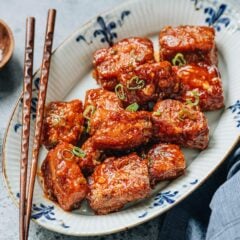
Peking Ribs (京都排骨)
Ingredients
Marinating
- 1 lb pork ribs
- 1 tablespoon Shaoxing wine
- 1 tablespoon soy sauce
- 1 tablespoon oyster sauce
- 1/2 teaspoon baking soda
Sauce
- 2 tablespoons water
- 2 tablespoons ketchup
- 2 tablespoons light soy sauce
- 1 tablespoon distilled vinegar
- 1 tablespoon sugar
- 1 teaspoon cornstarch
- 1/2 teaspoon black pepper
Cooking
- 3 tablespoons cornstarch
- Vegetable oil (for frying)
- 2 cloves garlic , minced
- 1 scallion , sliced, white and green parts separated
Instructions
- Combine the pork ribs with the rest of the marinating ingredients in a large bowl. Mix well and marinate in the fridge for at least 1 hour, up to overnight.
- Combine the sauce ingredients in a medium bowl.
- Once ready to cook, drain off and discard the excess liquid from the marinated pork. Pat dry with paper towels (to prevent oil splatter). Dust cornstarch onto the pork and mix to coat evenly.
- Heat 1” (2.5 cm) oil in a wok or frying pan over medium-high heat to 350°F (176°C). Line a baking sheet with a wire rack. Carefully lower the pork into the oil using a spider strainer. Fry over medium heat for 2 minutes, until golden. Transfer pork to the rack to drain off excess oil. Heat the oil to 375°F (190°C). Fry the pork ribs again for 1 minute, until golden. Transfer to the wire rack again to drain.
- Heat 2 tablespoons of oil in a large skillet over medium-high heat until shimmering. Add the garlic and scallion whites. Turn to medium heat. Cook and stir the aromatics for 30 seconds to release fragrance.
- Stir the sauce again to dissolve the cornstarch completely, pour it into the wok and stir immediately. When the sauce thickens, add back the pork and stir to coat well. Transfer everything to a plate and garnish with scallion greens. Serve hot as an appetizer.
Notes
- To make this dish gluten-free: Use dry sherry to replace Shaoxing wine, and use tamari to replace light soy sauce.
Nutrition

Did you make this recipe?
I’d love to hear how it turned out for you! Please take a moment to leave a 5-star rating ⭐️ and share your thoughts in the comments further down the page. It really helps others discover the recipe too.
